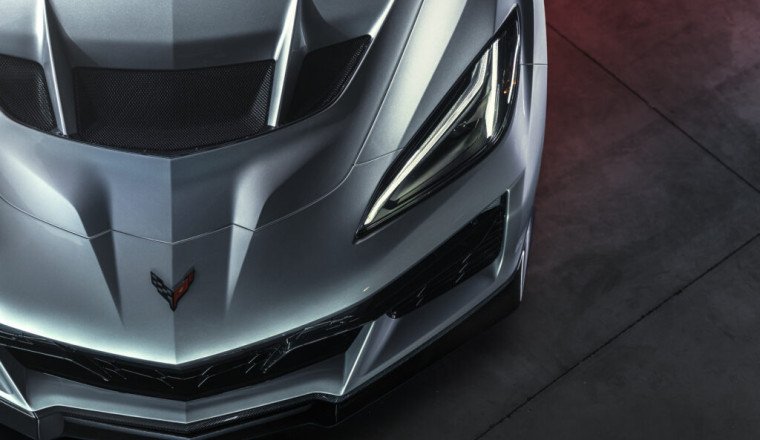
We knew this car was coming: A Corvette to rule them all, whose driveline would pair the electrified front axle of the E-Ray with the ZR1’s mid-mounted, twin-turbo V-8. It would be called the Zora, after Zora Arkus-Duntov, the racer-engineer known as the godfather of the Corvette. After all, Zora wanted to make the Corvette mid-engine back in the ’60s. It was only appropriate that the most powerful mid-engine variant would bear his name.
Patent filings in 2018 were the first suggestion. We soon learned that the generation’s internal code name was ZERV — after the midengine CERV concepts, but beginning with a Z, for Zora. (The CERV cars were his babies.) In 2019, Chevy showed off a camouflaged C8 with Zora’s face on it. The Stingray was announced that year, the Z06 in 2022, the hybrid E-Ray in 2023, and the 1064-hp ZR1 in 2024. Corvettedom waited with bated breath. Finally, the day came. Chevrolet announced the AWD, hybrid, twin-turbo Corvette we had been waiting for: the ZR1X.
The what?
That’s what I exclaimed, too, in the press briefing held last Monday. Thankfully, it was an online event, and my mic was muted.
Zora is the correct name for this car—but not for the reasons that you might guess. Zora Arkus-Duntov, the godfather of the Corvette, was always willing to make a radical change if it meant higher performance. Keep in mind as we dig into the specs.
The driveline is exactly what we expected. Together, the electric motor and the LT7 V-8 produce 1250 hp. (As in the E-Ray, the motor drives the front axle, the engine the rear axle. The motor and the engine are not physically connected.) The twin-turbo, flat-plane-crank, dry-sump engine carries over unchanged from the ZR1, but the electric drive unit has been upgraded with stronger internals and reworked to produce more usable battery energy. It now makes 186 hp and 145 lb-ft of torque, up 26 hp and 20 lb-ft compared to the version in the E-Ray (160 hp, 120 lb-ft). To handle the extra torque, the case and bearings for the motor were upgraded. Since torque curves don’t stack, like horsepower curves do, those figures are best listed separately: 828 lb-ft from the engine, 145 lb-ft from the motor.
According to the estimates provided by GM, the car will be ludicrously fast. The ZR1X executes the zero-to-60-mph sprint in under 2 seconds, the quarter mile in less than nine, with a trap speed of 150 mph. (No, they didn’t use a prepped surface.) Top speed is 233 mph, same as the regular ZR1, unless you get the high downforce package (ZTK), with the big wing. Cars so-equipped will top out at 225 mph, but they’ll be making 1200 pounds of downforce when they do.
It seems like Chevrolet sees the ZR1X as “the AWD ZR1,” a sort of incremental upgrade for the most power-hungry customers. Indeed, marketing manager Megan Daley said that the target customer for ZR1X will be “very similar” to that of ZR1—the choice comes down to “how they want their vehicle to behave.” The difference between the two ZR1 models, she said, won’t be as significant as between the Stingray and E-Ray and Z06. For the change in the relationship of the new model to the ZR1, we have GM’s talented powertrain engineers to blame—or, rather, to admire. Their initial target was 850 hp, but after going through the development process, they got to 1064. Who would say no to that?
What is surprising about the new apex Corvette is what Chevy didn’t change. The ZR1X looks like … a ZR1. Odd, because the press briefing and release frequently refer to the ZR1X as “the Corvette hypercar.” How, exactly, are you supposed to tell the King of the Hill Corvette, the ZR1, from the hypercar Corvette? When we covered the 1275-hp McLaren W1, which Chevy named as a rival to the ZR1X, we “needed a magnifying glass” to tell it apart from lesser McLarens. In the case of the ZR1X, you’ll need a microscope—or, perhaps, a lift.
The difference between the ZR1 and the ZR1X, says chief engineer Josh Holder, is underneath the car. “We’ve made some changes to the strakes underneath the car—not to change overall downforce, but to shift the balance slightly forward to take advantage of the all-wheel drive.” Chief designer Vlad Kapitonov also pointed out the side intake, whose horizontal extension (the leg of the sideways Y) now channels air to cool the rear brakes.
One of the most impressive bits of kit is hiding in plain sight, and is also borrowed from the ZR1: The brakes. The front brake calipers have ten pistons; the rears, six. The rotors are carbon-ceramic and measure 420 mm front and rear—that’s 16.5 inches! It’s the same brake package as you get on the rear-wheel-drive ZR1 with the ZTK upgrade. To put the size in perspective, said Holder, the rear brake pads on the ZR1X (which uses the J59 setup) are as big as the front pads on the carbon-ceramic option for the Z06 and E-Ray (J57).
The entire ZTK package, actually, carries over from the ZR1: The Carbon Aero package, including the big wing (it’s the same as on the ZR1), plus stiffer springs and a set of Michelin Cup 2 R tires. The standard tire, the Michelin Pilot Sport 4S, is the same as on the ZR1. The sizes are the same as the ZR1 (275/30ZR20 for the front, 345/25ZR21 for the rear).
Because of the high-voltage battery pack, the electric motor, and the cooling system for said components, the ZR1X weighs about 180 pounds more than the ZR1. Dry weight is 3875 pounds, curb weight 4100 pounds. As on the ZR1, you will be able to spec the Carbon Revolution wheels, and save 42.8 pounds.
In short, the ZR1X is a totally different kind of Corvette—and not simply because the engine is in the middle, or because it doesn’t have a manual transmission. It has a flat-plane crankshaft, twin turbochargers, an electric motor, a driven front axle, more horsepower than ever, more touchscreens than ever, more computers than ever. What happened to the rough-and-tumble Corvette we knew and loved?
The Corvette had to change to stay true to the mission Zora set—to challenge Europe’s best. By spearheading the Corvette’s evolution from cushy, fashionable T-bird rival to a competition-worthy sports car, Zora proved he was willing to reinvent the model in the pursuit of performance. His effort to further reinvent the car—to make it mid-engine—wasn’t realized in his lifetime. Zora refused to hold the status quo sacred.
Zora may have been an iconoclast, but the dedicated fanbase that formed around his cars had a more fixed image of what made a Corvette a Corvette. “When you consider that the move beyond chrome bumpers was initially a tough sell, it’s clear how conservative Corvette owners can be.” That’s Dave McLellan, who succeeded Arkus-Duntov as the Corvette chief engineer in 1975, reflecting on why the mid-engine Corvette took four decades. “The sense I have is that advanced features such as a mid-engine layout and all-wheel drive will eventually attract new buyers.”
He’s been proven correct. Corvette marketing manager Megan Dalley said that Chevrolet has sold 160,000 C8s so far, and it is on track to sell more C8s by the end of 2025 than it sold in the six-year run of the C7. Compared to C7 customers, C8 buyers are younger, more affluent, and more diverse.
If we take a page from Zora’s book, we should welcome the ZR1X. It deserves the Zora name.
I would have thought we would have waited at least a model year before this was announced but I guess it was all ready to go. I definitely want to see what this thing does but I’ll prefer the ZR1 without the X myself.
They are far from done.
There still may be a Zora. I have heard talk of a track oriented car like a 911 GT3. This would better fit Zora a real racer himself.
Also speculation the ERay may be replaced by a Grand Sport. A wide body OHV V8 like the ERay but with high down force options at a lower price.
The C9 is expected in 2028 as a 2029.
I guess I’m gonna have to keep waiting for the Zora. This is a little to slow for me and could use a bit more power! 😄







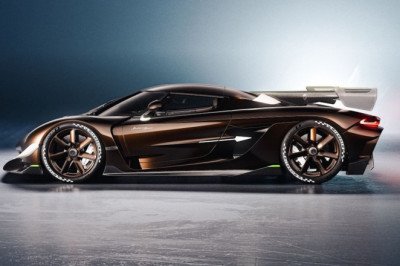

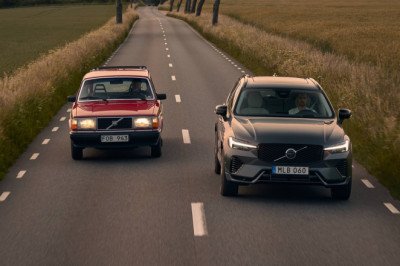
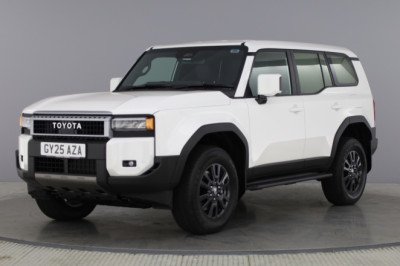



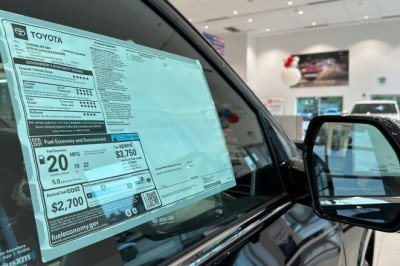
Facebook Conversations